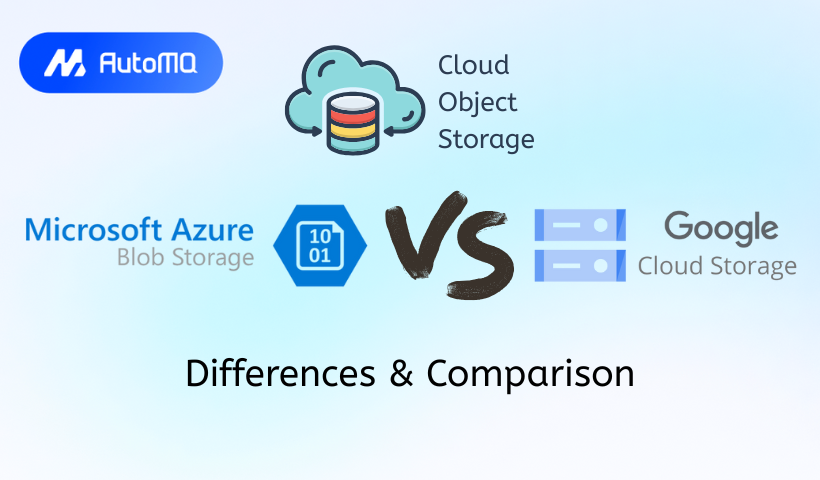Overview
Choosing the right cloud storage solution is a critical decision for any application, impacting scalability, performance, cost, and data durability. As object storage becomes the de facto standard for unstructured data, two prominent players in the market are Microsoft's Azure Blob Storage and Google's Cloud Storage (GCS). This blog post offers a comprehensive comparison from a senior software engineer's perspective to help you navigate their features and make an informed choice.
Understanding the Basics
Before diving into a detailed comparison, let's establish a foundational understanding of each service.
Azure Blob Storage
Azure Blob Storage is Microsoft's massively scalable object storage solution for the cloud [1]. It's designed to store and manage vast amounts of unstructured data, such as documents, images, videos, logs, and backups. Azure Blob Storage is a core part of the Azure ecosystem and integrates deeply with other Azure services.
Its fundamental components include:
Storage Account: Provides a unique namespace in Azure for your data. Every object you store in Azure Storage has an address that includes your unique account name.
Container: Organizes a set of blobs, similar to a directory in a file system. A storage account can include an unlimited number of containers, and a container can store an unlimited number of blobs [1].
Blobs: The actual objects or files you store. Azure offers three types of blobs:
Block Blobs: Ideal for storing text and binary data, such as documents and media files. They are composed of blocks of data that can be managed individually [2].
Append Blobs: Optimized for append operations, making them suitable for logging scenarios [2].
Page Blobs: Designed for random read and write operations, primarily used for VHD files backing Azure Virtual Machines [2].
![Azure Blob Storage Structure [33]](https://static-file-demo.automq.com/6809c9c3aaa66b13a5498262/69099c1756f41993cde56416_67480fef30f9df5f84f31d36%252F685e643f6af15227ba5b9ef1_dOxG.png)
Google Cloud Storage (GCS)
Google Cloud Storage (GCS) is Google's unified object storage service, known for its high reliability, performance, and global accessibility [3]. It's built on Google's robust infrastructure and is tightly integrated with Google Cloud's data analytics and machine learning services.
Its core components are:
Project: The top-level organizer in Google Cloud. All GCS resources belong to a project.
Bucket: Basic containers that hold your data in GCS. Buckets must have a globally unique name and are associated with a geographic location and a default storage class [3].
Object: The individual pieces of data stored in GCS, which can be any kind of file [3].
Managed Folders (Optional): Provide a way to grant additional access to specific prefixes within a bucket, beyond the bucket-level permissions [3].
Side-by-Side Comparison
Let's break down key aspects for a direct comparison:
Storage Tiers/Classes
Both platforms offer different tiers (Azure) or classes (GCS) to optimize costs based on data access frequency and retention needs.
Azure Blob Storage Tiers [8]:
Hot: Optimized for storing data that is accessed frequently. Highest storage costs, lowest access costs.
Cool: Optimized for storing data that is infrequently accessed and stored for at least 30 days. Lower storage costs, higher access costs compared to Hot.
Cold: Optimized for storing data that is rarely accessed, stored for at least 90 days, and can tolerate several hours of retrieval latency. Even lower storage costs, higher access costs than Cool. (Note: The "Cold" tier is a newer addition aimed between Cool and Archive for some use cases).
Archive: Optimized for storing data that is rarely accessed, stored for at least 180 days, and can tolerate several hours of retrieval latency. Lowest storage costs, highest retrieval costs. Data in the Archive tier is offline and needs to be "rehydrated" to an online tier before access.
Google Cloud Storage Classes [9]:
Standard Storage: For "hot" data that is frequently accessed and/or stored for only brief periods. No retrieval fees.
Nearline Storage: Low-cost option for data you plan to access less than once a month. Minimum storage duration of 30 days and incurs retrieval fees.
Coldline Storage: Very low-cost option for data you plan to access less than once a quarter. Minimum storage duration of 90 days and incurs retrieval fees.
Archive Storage: Lowest-cost option for data you plan to access less than once a year. Minimum storage duration of 365 days and incurs retrieval fees. Data is still accessible within milliseconds, unlike Azure's offline archive.
<img alt="Google Cloud Storage Storage Classes [32]" src="https://webflow-prod-assets.s3.amazonaws.com/67480fef30f9df5f84f31d36%2F685e64fcb6f732e1179bdf35_ZwPO.png"width="80%" />
Comparison: GCS Archive offers faster access (milliseconds) than Azure's offline Archive tier (hours). Minimum storage durations and retrieval fees are important considerations for cooler tiers on both platforms.
Performance
Scalability and Throughput:
Azure Blob Storage provides scalability targets for storage accounts, including request rates and ingress/egress limits. For instance, a single blob container can scale to the maximum storage account capacity, and block blobs have specific limits on block size and count [10].
Google Cloud Storage also automatically scales I/O capacity as request rates grow. It has initial I/O capacities (e.g., ~1000 write requests/sec, ~5000 read requests/sec per bucket) which increase as needed [7]. Naming conventions for objects can impact scaling performance on GCS [7].
Latency:
Hot/Standard tiers on both platforms offer millisecond latency for first byte.
Cooler tiers generally maintain millisecond latency for online access (Azure Cool/Cold, GCS Nearline/Coldline/Archive). Azure's Archive tier has multi-hour retrieval latency [8, 9].
Direct, recent, independent benchmarks across various object sizes and workloads are often hard to come by, so testing with your specific workload is recommended.
SLAs (Service Level Agreements):
Azure Blob Storage SLAs vary based on the redundancy option and tier, typically ranging from 99.9% to 99.99% for read/write availability in hotter tiers [11].
Google Cloud Storage SLAs also vary. For example, Standard storage in a multi-region or dual-region offers a 99.95% monthly uptime percentage, while regional Standard storage offers 99.9% [9]. Colder tiers may have slightly lower SLAs.
Global Distribution: Both have extensive global networks of data centers. The choice of region and replication strategy significantly impacts latency for end-users and data sovereignty compliance.
Key Features
| Feature | Azure Blob Storage | Google Cloud Storage |
|---|---|---|
| Object Versioning | Supported. Maintains previous versions of blobs, protecting against accidental deletion or modification [15]. | Supported. Automatically creates a noncurrent version when a live object version is replaced or deleted [16]. |
| Lifecycle Mgmt. | Define rules to automatically transition blobs to cooler tiers or delete them based on age or other conditions [17]. | Define rules to transition objects to cheaper storage classes or delete them based on various conditions [18]. |
| Event Notifications | Integrates with Azure Event Grid to trigger actions (e.g., Azure Functions, Logic Apps) on blob events [1]. | Integrates with Cloud Pub/Sub to send notifications for changes in buckets and objects [19]. |
| Data Transfer | Azure Data Box family for offline transfer, AzCopy command-line tool, Azure Data Factory for orchestration [20]. | Storage Transfer Service for online and on-premises transfers, gsutil command-line tool, Transfer Appliance for offline. |
| CDN Integration | Azure CDN can cache blob content closer to users for lower latency access [21]. | Cloud CDN (Content Delivery Network) works seamlessly with GCS to deliver content globally with low latency [22]. |
| Static Website Hosting | Supported directly from a storage container named $web [23]. | Supported by configuring a bucket to host static website assets [24]. |
Pricing Model
Both Azure Blob Storage and Google Cloud Storage primarily use a pay-as-you-go pricing model. Key factors influencing cost include [30, 31]:
Storage Capacity: Cost per GB stored, varying by storage tier/class and region.
Operations: Charges for read, write, list, and other operations (e.g., per 10,000 operations).
Data Transfer:
Ingress (data into the storage) is generally free for both.
Egress (data out of the storage) is charged, with rates varying by region and destination (e.g., within the same region, to another region, to the internet).
Inter-region replication also incurs transfer costs.
Retrieval Fees: Applicable for cooler tiers (Azure Cool, Cold, Archive; GCS Nearline, Coldline, Archive) when data is accessed or retrieved.
Early Deletion Fees: May apply if data is deleted before the minimum storage duration in cooler tiers.
It's crucial to use the official pricing calculators (Azure Pricing Calculator [30], Google Cloud Pricing Calculator [31]) for accurate cost estimations based on your specific workload and region.
Common Issues and Best Practices
Common Issues
Cost Management: Unexpected costs can arise from high egress fees, frequent operations on cooler tiers leading to retrieval charges, or misconfigured lifecycle policies.
API Rate Limits/Throttling: High-velocity workloads can hit API rate limits if not designed for gradual scaling or if object naming conventions cause hotspotting (especially on GCS) [7].
Latency with Cold Tiers: Not accounting for the retrieval times or costs associated with accessing data from archive/cold tiers can impact application performance and budget.
Best Practices
Tier/Class Selection: Analyze data access patterns to choose the most cost-effective storage tier/class. Regularly review and adjust.
Lifecycle Management: Implement lifecycle policies to automatically transition data to cooler tiers or delete it when no longer needed.
Cost Monitoring: Utilize cloud provider tools and third-party solutions to monitor storage costs proactively.
Security:
Apply the principle of least privilege for access control.
Use strong encryption mechanisms (CMK where appropriate).
Secure network access using private endpoints/VPC service controls and firewalls.
Performance Optimization:
For GCS, use random object naming prefixes to avoid sequential keys that can lead to hotspotting [7].
For Azure, distribute load across multiple containers or storage accounts if facing extreme scale.
Use Content Delivery Networks (CDNs) for frequently accessed public data to reduce latency and egress costs from storage.
Data Transfer: Plan large-scale data transfers, considering online vs. offline methods and associated costs.
Use Cases: When to Choose Which?
The "best" choice depends heavily on your specific requirements and existing cloud ecosystem.
Consider Azure Blob Storage if:
Your organization is heavily invested in the Microsoft ecosystem (Azure AD, .NET applications, other Azure services like Azure Synapse Analytics, Azure Data Factory, Power BI).
You require specific Azure networking features like seamless VNet integration for existing Azure workloads.
Your team is more familiar with Azure's management tools and interfaces.
Consider Google Cloud Storage if:
You need strong global consistency for all operations without complex application logic.
Your workloads involve extensive use of Google Cloud's data analytics and AI/ML services (e.g., BigQuery, Vertex AI, Dataflow), as GCS offers optimized integration.
Fast access to archived data (milliseconds for GCS Archive vs. hours for Azure Archive) is a requirement.
The simplicity of Google Cloud's IAM and project structure is preferred.
In many scenarios, both platforms can effectively meet the requirements. Factors like existing vendor relationships, team skill sets, and specific feature nuances often play a deciding role.
Conclusion
Both Azure Blob Storage and Google Cloud Storage are mature, robust, and highly scalable object storage solutions. They offer a rich set of features for data storage, management, security, and cost optimization.
Azure Blob Storage stands out with its deep integration into the wider Azure ecosystem and a variety of redundancy options. Google Cloud Storage shines with its strong global consistency, performant archive access, and tight coupling with Google's powerful data analytics and ML capabilities.
The choice isn't about which is definitively "better," but which is a better fit for your unique technical requirements, workload patterns, existing infrastructure, and strategic cloud direction. Thoroughly evaluate your needs, leverage free tiers for experimentation, and use the pricing calculators to model your expected costs before making a final decision.
If you find this content helpful, you might also be interested in our product AutoMQ. AutoMQ is a cloud-native alternative to Kafka by decoupling durability to S3 and EBS. 10x Cost-Effective. No Cross-AZ Traffic Cost. Autoscale in seconds. Single-digit ms latency. AutoMQ now is source code available on github. Big Companies Worldwide are Using AutoMQ. Check the following case studies to learn more:
Grab: Driving Efficiency with AutoMQ in DataStreaming Platform
Palmpay Uses AutoMQ to Replace Kafka, Optimizing Costs by 50%+
How Asia’s Quora Zhihu uses AutoMQ to reduce Kafka cost and maintenance complexity
XPENG Motors Reduces Costs by 50%+ by Replacing Kafka with AutoMQ
Asia's GOAT, Poizon uses AutoMQ Kafka to build observability platform for massive data(30 GB/s)
AutoMQ Helps CaoCao Mobility Address Kafka Scalability During Holidays
JD.comx AutoMQ x CubeFS: A Cost-Effective Journey at Trillion-Scale Kafka Messaging
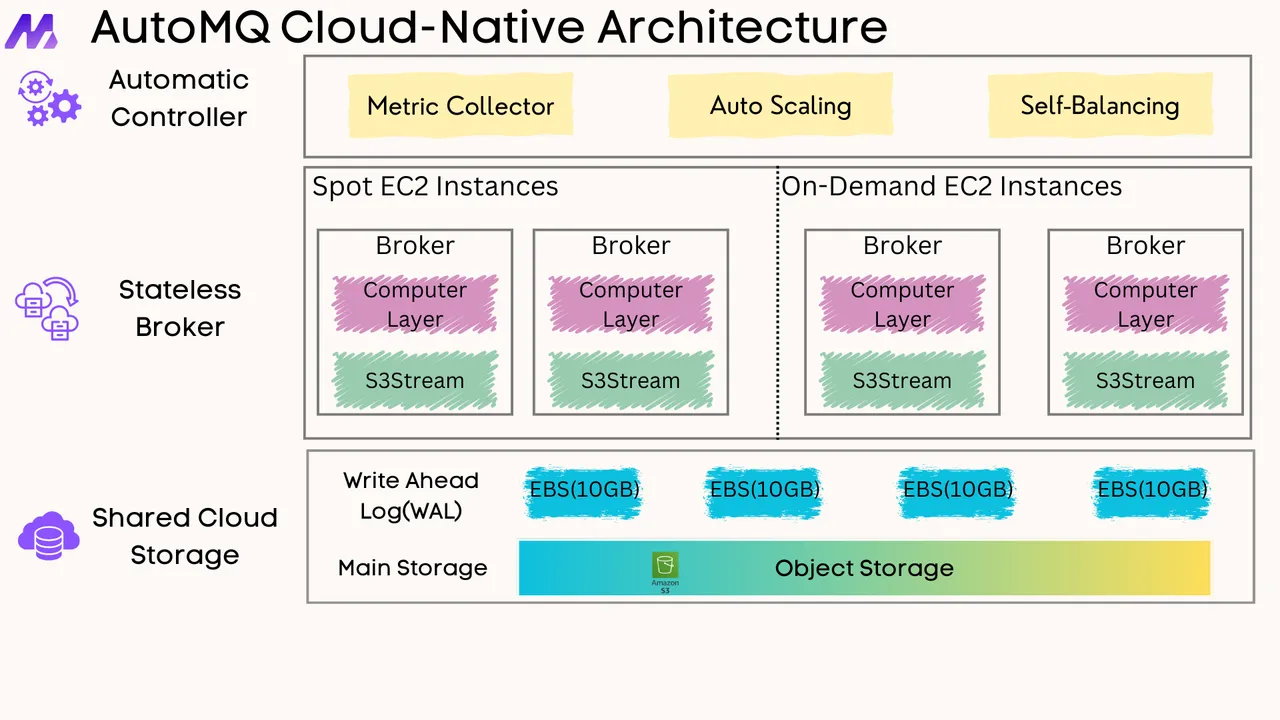





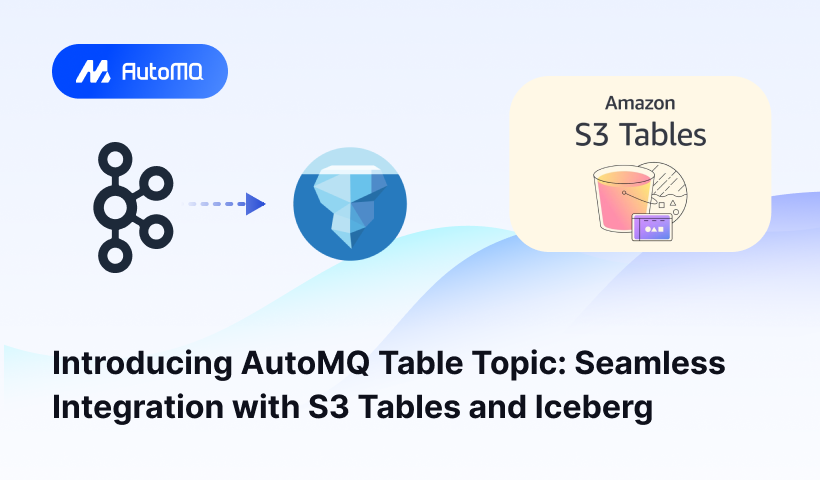
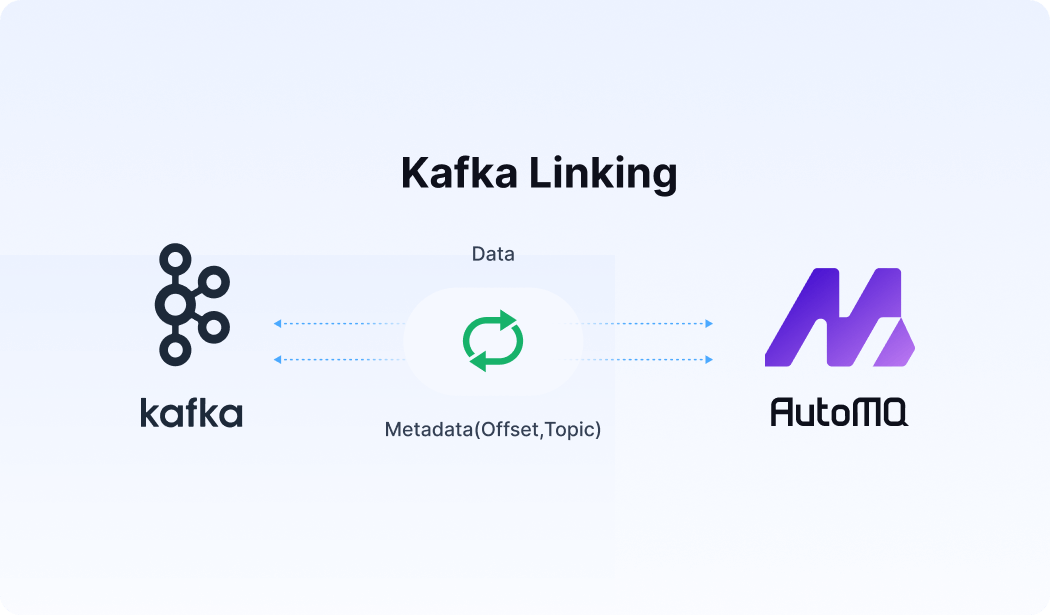




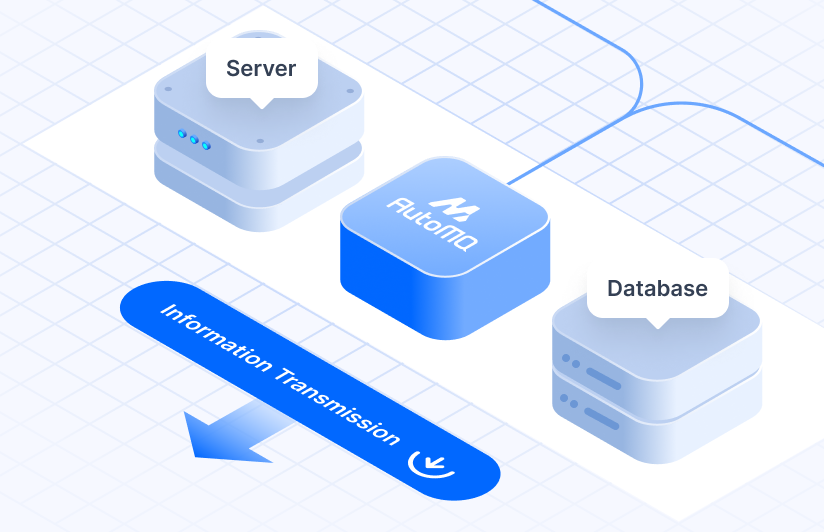



.png)
